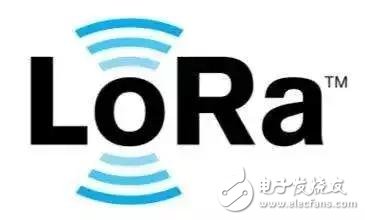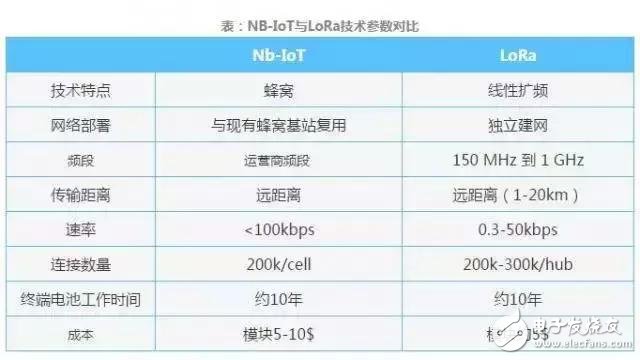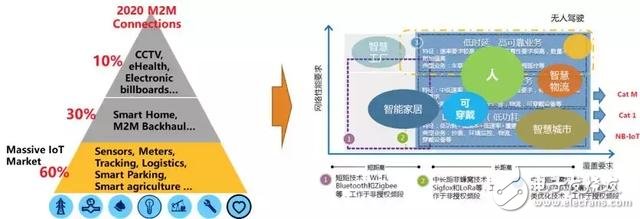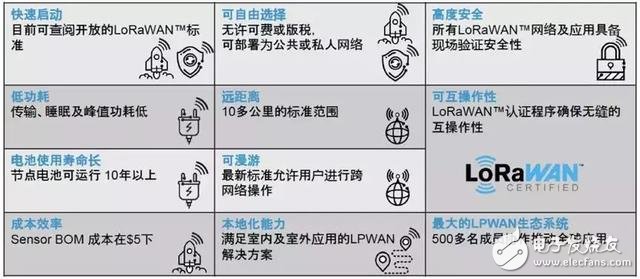Recently, the Internet of Things industry broke out again-LoRa Alliance (LoRa Alliance) and Tencent recently announced that Tencent has joined the LoRa Alliance at the highest level, which will further accelerate the adoption of LoRaWAN technology.
This is another important event in the LoRa field after the cooperation between Alibaba, China Unicom and Semtech and Google's entry into the LoRa Alliance. It undoubtedly provides a huge driving force for the accelerated development of LoRa technology in China.
With the rapid development of the Internet of Things industry, the platforms of giants such as Alibaba, Google, Tencent, and the commercial use of a large number of LoRa applications at home and abroad, LoRa has in fact become one of the mainstream Internet of Things network standards.

This article will explain the three misunderstandings of the LoRa system and let you understand a more realistic LoRa network and application scenarios.
Misunderstanding 1: Is there a unified standard for the Internet of Things?For many years, the industry has been accustomed to the standardization and unification of the Internet of People, and let it go with the flow of this "one or the other" "Internet of People" selection concept to the Internet of Things LPWAN market.
In fact, LoRa, NB-IoT, and e-MTC all belong to LPWAN networks and have complementary technical capabilities and application scenarios.
Starting from the technology itself, the picture below is the technical comparison between NB-IoT and LoRa.

It can be seen that both technologies belong to the category of LPWAN, and the application scenarios and technical limitations are very similar. The advantage of NB-IoT lies in the operator's full-area coverage and dedicated frequency bands. However, it is inevitable that there will be connection blind spots and autonomy problems. For example, the 4G network that has been built for many years still has signal transmission black spots even in the city, and users will still use WiFi networks as a supplement in their homes and parks.
We extracted the object’s demand for connection capabilities into three dimensions: connection rate, coverage, and connection scale.
Combined with the current mainstream technology standards of the Internet of Things, in order to show more intuitively, we have made a corresponding view of the typical application scenarios and technical requirements of the Internet of Things, as follows:

The figure intuitively reflects two characteristics:
One is the limitation of technology.
Objects in different scenes have huge differences in network speed, coverage requirements, and the number of links. No single technology can meet the differentiated requirements of different application scenarios of the Internet of Things in an end-to-end and all-round way.
Take driverless cars and home water meters as examples. They have two extremes of network performance requirements. It is difficult for us to use the same network technology to meet these two hugely different scenarios at the same time. This will either cause extreme waste of network resources. , Or there will be a huge shortage of network resources.
The second is the symbiosis of technology.
The same application scenario often contains multiple types of connection requirements. Taking the Internet of Vehicles as an example, the connection requirements in the car include unmanned driving (ultra-high speed, ultra-high reliability), in-vehicle entertainment (medium speed, moderate reliability), car body perception (low speed, low reliability), etc. Types require the symbiosis and coordination of different connection technologies to provide a complete overall solution.
Therefore, the Internet of Things will be a situation where different technology types bloom and coexist.
Misunderstanding 2: Is there an application scenario for LoRa?Different technical characteristics will bring different application scenarios. The biggest value of LoRa lies in its ease of deployment and autonomy.
In general, LoRa is more suitable for scenarios where enterprise users have high requirements for autonomy and rapidity, and high requirements for continuous coverage and in-depth coverage, such as parks, factories, factories, mines, farms, logistics distribution centers, complexes, and residential communities.
"The species that can survive are not the strongest, nor the smartest, but those that respond quickly to change." Darwin's words may best illustrate the value of LoRa.
LoRa currently provides connectivity similar to a wide area network, and there are already outdoor, indoor and even desktop router-sized devices in the gateway market. Everyone can build their own LoRa network, which is as convenient as using Wifi connection, so both Complement each other, and application scenarios will also help each other grow.

The application scenarios of LoRa are also entering the commercial stage quickly and swiftly with a prairie fire.
For example, in April this year, Alibaba Cloud and Zhejiang Unicom jointly announced that the IoT platform based on LoRa devices and radio frequency technology has begun trial commercial use.
At present, the LoRa networks built by Alibaba in Hangzhou and Ningbo are ready for commercial use. Alibaba has also carried out LoRaWAN experiments in its own business scenarios. For example, the total construction area of ​​the Cainiao Park is about 200,000 square meters. This park uses 4 LoRa micro gateways and 4 base stations to cover the entire 200,000 square meters. Park.
Another example is China's first Internet of Things town in Wuxi Hongshan, where LoRa transmission technology and Internet of Things communication protocols have been widely used in urban management to manage the city. “We deployed a large number of sensors in Hongshan, and collected data on our platform through the LoRa protocol for unified management.†said Mr. Yunci Wang from Alibaba Cloud IoT.
The traditional TV industry giant, Radio and Television Group, also relied on LoRaWAN technology and spectrum resources to build a city-level LPWAN network quickly and at low cost. In the Shanghai Oriental Pearl Project, LoRaWAN technology was adopted to undertake the implementation and operation of intelligent solutions in the six districts of Shanghai, to fully perceive urban fire protection, community safety and urban lonely elderly people, and to speed up the disposal process through event linkage related departments to help The city government improves work efficiency and helps citizens get better services.
Misunderstanding 3: Is LoRa used internationally?Under the promotion of LoRa Alliance, LoRaWAN has been launched in many countries and regions. Most of today's shipments are used in the metering industry, and it is gradually beginning to appear in data collection such as logistics, environmental sensing and park monitoring.
As of now, statistics from the alliance: According to data released by LoRa Alliance in 2018, network construction has begun in more than 41 countries, pilot projects have begun in more than 350 cities, and 67 network operators have been established.
United States: Senet's network covers 225 cities in 23 states.
Comcast, the largest cable television company, announced the adoption of LoRa technology. It will first complete network deployment in Philadelphia and San Francisco, and provide metering related (meter reading, etc.), environmental monitoring related (temperature and humidity, pollution, noise monitoring, etc.), tracking and positioning related, etc. service
France: Orange has completed the nationwide coverage of the LoRaWAN network in France.
India: Tata has established networks in Mumbai and Delhi and put them into use in the logistics industry.
Australia: Telstra announced that it will be piloting it in Melbourne.
South Korea: SK Telecom deployed a nationwide LoRa network in the first half of 2016, provided LoRa-based IoT services, and announced the charging method.
Water-cooled Capacitor is supercapacitor is a capacitor with a capacity of thousands of farads.According to the principle of capacitor, capacitance depends on the distance between the electrode and electrode surface area, in order to get such a large capacitance, as far as possible to narrow the distance between the super capacitor electrode, electrode surface area increased, therefore, through the theory of electric double layer and porous activated carbon electrode.
Water-Cooled Capacitor,Water-Cooled Power Capacitor,Water-Cooled Electric Heat Capacitor,Water-Cooled Electric Heating Capacitor
YANGZHOU POSITIONING TECH CO., LTD. , https://www.cnchipmicro.com